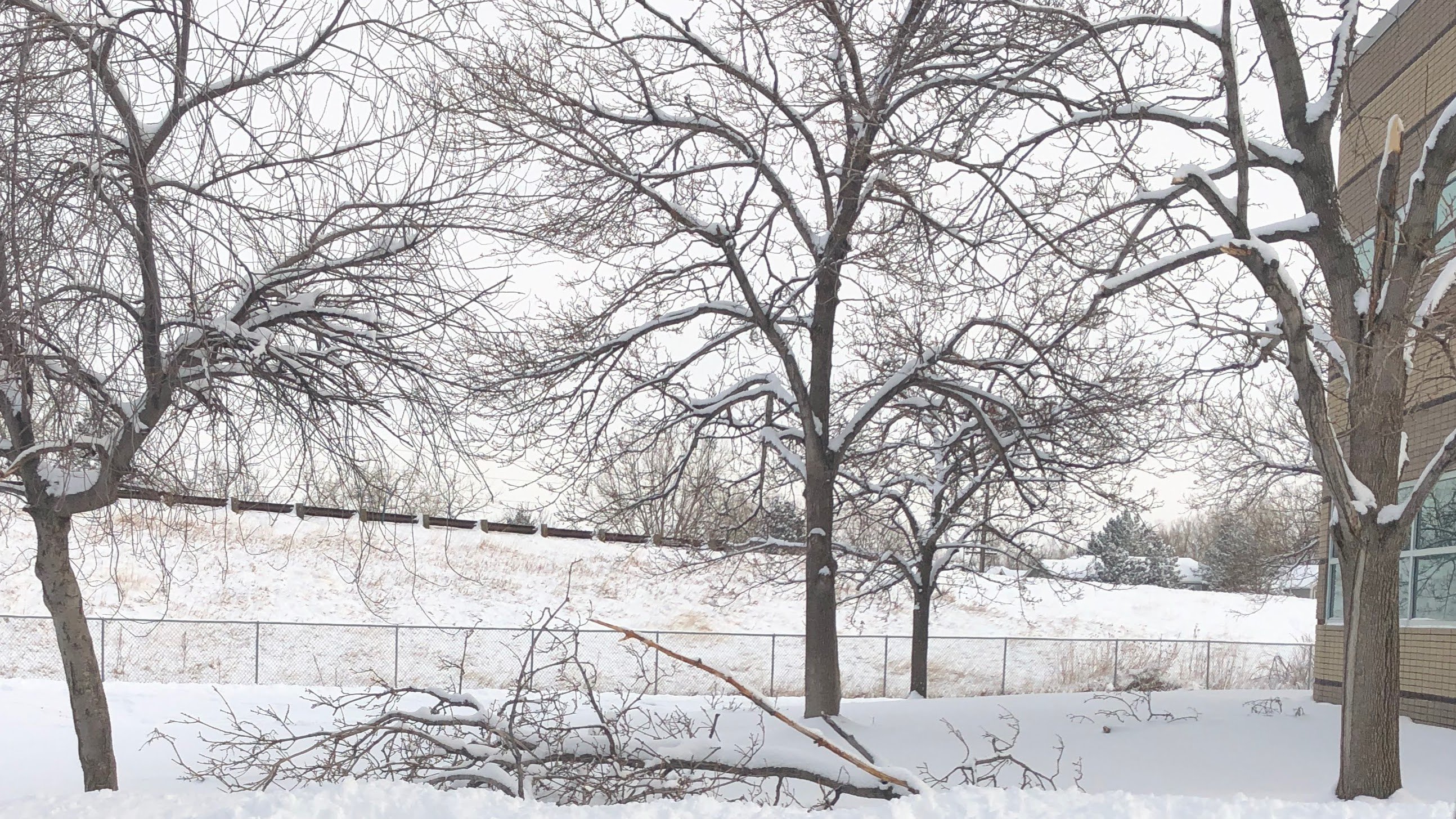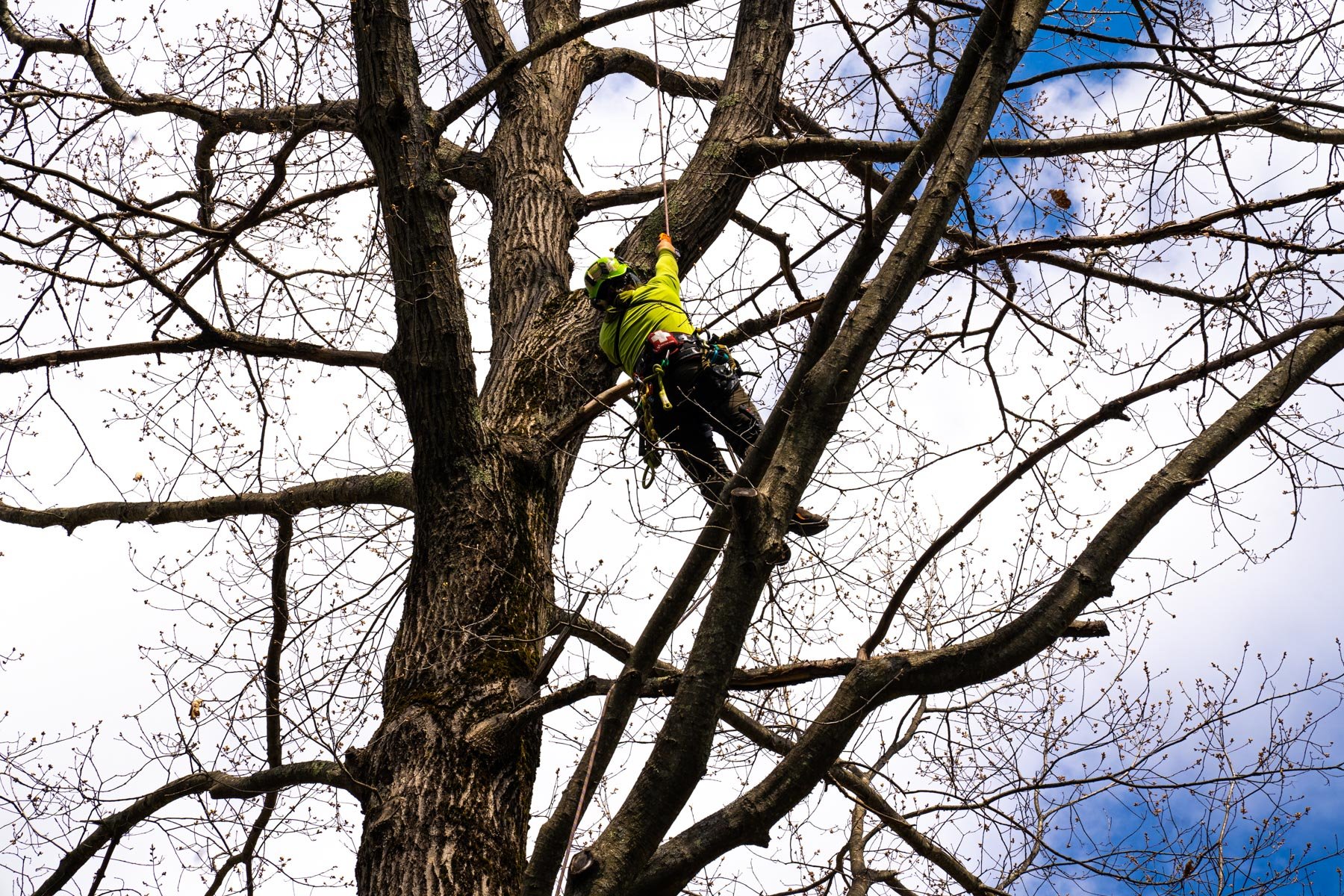
How to Protect Your Trees From Snow and Ice: 4 Helpful Tips
Here in New England where winter weather can be harsh with significant winds, snowfall, and ice, it’s important to look into winter tree protection. Your property’s trees are a valuable asset and you want to do what you can to protect them.
In this article, we’ll share some of our best advice on how to protect trees in the winter.
We’ll cover:
#1: Structural Pruning
#2: Tree Cabling and Bracing
#3: Safe Plowing and Deicing
#4: Anti-Desiccant Sprays
Heavy snow and ice can cause limbs to become misshapen or break. And wind can lead to dangerous tree damage. But by following these tips, you can help set your landscape up for success.
#1: Be Proactive with Structural Pruning
When it comes to how you can protect trees from heavy snow and ice, structural pruning is one of the best ways you can prepare for the winter season. With structural pruning, you can make sure defects or weak branches are removed so that they don’t pose extra risk when piled with ice or snow.
Structural pruning will also help remove branches that might be at an increased risk of falling due to high winds.

Of course, you might be reading this and you didn’t get a chance to protect trees from ice and snow with structural pruning. Now your tree is covered and you’re not sure what to do. At this point, it will be important to exercise caution.
For smaller shrubs, you can go out and lightly shake them to knock snow off before it piles up. Heavy snow can negatively impact the shape of your small evergreen trees and shrubs.
But if you notice a coating of ice, the best thing to do is leave it alone. Do not shake branches to attempt to remove ice as this can do more harm than good. Your branches will be more likely to break in this condition. You’ll want to wait for that ice to melt.
We also do not advise attempting to knock snow from taller trees as this can be incredibly dangerous.
#2: Send in the Reinforcements When Needed
A tree that is growing in a way that inhibits it from supporting its weight can result in the tree splitting and falling…particularly if it gets piled up with snow and ice. If you have a tree like this on your property, it may be a constant source of worry.

Tree cabling and bracing can be an effective solution that reduces the risk of trees falling. When using tree cabling for added support, cables are installed within the canopy of the tree. With tree bracing, one or more steel rods is installed in the tree trunk or limbs to add support and reinforce weak spots.
A thorough evaluation by a certified arborist will help determine whether one or both of these services is warranted, particularly ahead of the winter season when your tree might experience additional weight and stress.
#3: Be Cautious with the Plow and Deicing Products
While it might not be advice about how to protect trees from snow, one of the ways that trees get damaged during the winter is actually by the snow plow. That’s why winter tree protection should also include a plan to keep your trees safe from this equipment.
Smaller shrubs by the road or your driveway run the risk of getting buried if care is not taken to avoid them. The weight of snow in a snowbank can be significant and you don’t want it piled up against one of your trees. Talk to snow plow companies about this ahead of time so that a better plan can be made for snow pile up.
The same goes for any deicing products used. While these can work great to quickly melt snow and ice, many of these products are harmful to the landscape. Inquire about plant-friendly de-icing products if you’re having your driveway or walkways treated near your landscape.
#4: Winter Tree Protection with Anti-Desiccant Sprays
Certain trees can be more susceptible to the negative effects of the cold. Evergreen trees and shrubs, for instance, can really struggle when the ground freezes. During this time the roots can no longer take in water and the plants will start to use the water they’ve already stored.

An anti-desiccant spray can combat this by providing a protective coating that keeps the leaves or needles from losing too much water through evaporation. This helps to save every last drop for the plant.
A Certified Arborist can apply an anti-desiccant spray to the trees and shrubs that can benefit from one.
Partnering with a Pro on New England Tree Care
Making sure that you’re doing everything you can to protect trees in the winter can be simplified when you’re partnering with a provider of professional tree care in Southern NH, Northeastern Massachusetts, and Southern Maine.
A pro can not only help you make sure that you’re taking all the right preventative steps, but they can also help you assess and repair damage.
Winter storms are a key cause of tree damage. Hanging or warped limbs or a leaning tree can be a serious hazard. If you’ve experienced storm damage, you might require limb or even tree removal to restore safety to your property.
At Seacoast Tree Care, we’re committed to preserving the health and beauty of trees in New Hampshire, Maine, and Massachusetts by performing vital services like tree pruning, tree removal, and general tree care throughout the year. We’re also here to offer helpful tree care tips so that you can be well-educated on what your trees need to be safer in the winter and every other season.
When you make a wise choice in tree services, you’ll ultimately take an important step in protecting the value of your property’s trees.
Ready for safer and healthier trees at your New Hampshire, Maine, or Massachusetts home? Request your consultation and get a free quote for tree pruning services. We service properties in and around Stratham, NH, Kittery, ME, and Haverhill, MA. By making a wise choice, you’ll know your trees are in good hands.


